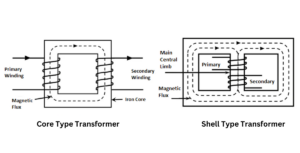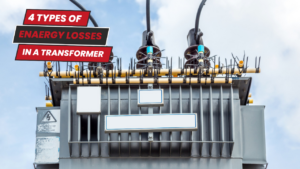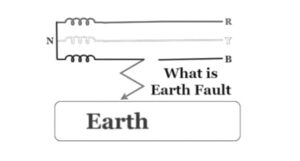Have you ever caught that thunderous “HUMMMMMMM” and encountered flickering lights or a brief power interruption when firing up hefty electrical appliances like an air conditioner or refrigerator? Well, that’s the power transformer, making its electrifying entrance with an Electric Cha-Cha (inrush current). But hold on, while it might seem like an over-enthusiastic dance partner joining the party, this electric tango has some serious moves.
The surge, resembling an energetic dance-off, sometimes goes wild—reaching several times the usual operating load current of the transformer. It’s as if the circuit breakers have their own talent show and decide to do some unplanned pirouettes, causing chaos in the grid and leaving the transformers a bit frazzled. The aftermath? Think of it as the ‘after-party cleanup,’ dealing with damaged transformers, sudden outages, and the subsequent hefty bills for repairs and unexpected downtime.
Furthermore, studies point out that transformers exposed to uncontrolled inrush currents face a considerably higher risk of a reduced operational lifespan, but it’s important to note that inrush current does not create permanent damage. So, to uncover the causes behind this electric jig and discover how to choreograph (manage) it more effectively, explore the insights shared in this blog.
What is Inrush Current?
Inrush current refers to the high instantaneous current drawn by the primary winding of the transformer when it’s powered up with an open-circuited secondary side. When an electrical device is switched on, particularly devices with capacitors or inductors, there is a brief period where the current surges above its steady-state or normal operating level.
The device has no magnetic field when it is first connected or turned on. A brief spike in current occurs when electrical power is delivered because of the rapid need for magnetic flux to create the field. For example, inrush current happens in a transformer when the windings are energised, and the core of the transformer is magnetised.
The device’s unique properties, the power source, and the load it is driving can all affect the inrush current magnitude. Inrush current is transient in nature and usually lasts for a relatively short while until the device stabilises and returns to its normal operating conditions, sort of like a quick “woohoo!” before everything goes back to its regular, steady mode.

What Causes Transformer Inrush Current?
Transformer inrush current is primarily caused by the initial magnetisation process when a transformer is switched on. Several factors contribute to the generation of inrush current:
- Magnetic Core Saturation: When a transformer is not powered, its core has minimal magnetic flux. When the transformer is first energised, the sudden application of voltage prompts a surge of current to establish the magnetic field within the core. Consequently, this leads to a high inrush current as the magnetic core becomes magnetised, necessitating the current required to induce flux in the core.
- Core Characteristics: The design and material properties of the transformer core influence the magnitude of the inrush current. Factors such as core size, composition, and geometry affect how quickly the core can be magnetised.
- Point on the AC Voltage Waveform: The instant when the transformer is energised concerning the AC voltage waveform can affect the inrush current magnitude. Energising the transformer at the peak of the waveform can result in higher inrush currents compared to doing so during the zero-crossing point.
- Load and Circuit Conditions: The existing load and circuit conditions can impact the inrush current. For instance, if the transformer is connected to a circuit with a high capacitive or inductive load, it might experience a more pronounced inrush current due to the energy required to establish the magnetic field.
- Previous Conditions: In some cases, the history of the transformer, such as its recent de-energisation and re-energisation, can influence the inrush current magnitude. If a transformer is re-energised quickly after being de-energised, it might experience a higher inrush current.
- Transformer size: The amount of inrush current is also influenced by a transformer’s physical dimensions. Because of their larger winding capacitance and enhanced magnetising properties, larger transformers typically have higher magnetising inrush currents.
Also read: Why are transformer windings made up of copper?
Effects of Transformer Inrush Current
The effects of transformer inrush current can have several implications on power systems and equipment:
- Equipment Stress: Uncontrolled inrush current places significant stress on transformer components, potentially leading to mechanical wear and reducing the overall equipment lifespan.
- Voltage Sags and Interruptions: Inrush current surges may cause voltage sags and momentary disruptions, impacting the stability of the power grid and the quality of supplied electricity.
- Tripping of protective devices: Sudden current surges can cause protective devices such as circuit breakers and fuses to trip unnecessarily, leading to intermittent power interruptions and affecting the electrical system’s reliability.
- Equipment Damage and Downtime: Excessive inrush current can damage transformers and associated equipment, resulting in unexpected outages, high repair costs, and increased downtime.
- Audible Noise: Inrush current can produce audible noise, sometimes perceived as a hum or a buzzing sound, which may not only be disruptive but also indicative of stress and strain on the equipment.
You may also like: What Causes Transformer Noise and How Can It Be Reduced?
Don't let unchecked inrush current wreak havoc on your power systems. Contact Grant Transformer to make a trouble-free power domain.
How to manage Transformer Inrush Current?
Managing transformer inrush current is crucial to ensure the stability and longevity of electrical power transformers. By employing a combination of techniques, power systems can effectively manage inrush current flow, reducing its impact on transformers and the overall stability of the electrical network. Each strategy may be applied depending on the specific requirements and characteristics of the power system in question.
Pre-insertion Resistors (PIRs):
Pre-insertion resistors are components installed in series with the transformer winding during the energisation process. They control the rate of rise of inrush current by introducing a level of resistance into the circuit. This resistance moderates the flow of current during the initial energisation, limiting the magnitude of inrush current, typically relative to the rated current of the transformer, and mitigating its impact on the system. Once the transformer is fully energised, the resistors are bypassed or shorted out to minimise power losses and ensure normal system operation.
Controlled Switching:
Controlled switching techniques entail a step-by-step escalation of the voltage applied to the transformer during energisation rather than instantaneously engaging full voltage. This gradual voltage increase serves to mitigate the impact of inrush current by sidestepping sudden voltage spikes that might trigger unwanted switching in the circuit breaker. Through this controlled process, the magnetising current builds up more smoothly, effectively reducing the magnitude of the inrush current and ensuring a stable start-up.
Neutral Grounding Reactors:
Transformers’ neutral grounding paths are carefully designed to accommodate neutral grounding reactors. They are purposefully integrated to add resistance to the neutral circuit, which is a key factor in limiting the current during faults and subsequently reducing the inrush current compared to the transformer’s full-load current. These reactors play a pivotal role in controlling the current flow during the energisation process, ensuring a smoother and less disruptive start-up of the system.
Transformer Design Considerations:
Modern transformer designs prioritise addressing the challenge of inrush current. Manufacturers implement diverse design techniques to diminish inrush current, including utilising low-flux density cores, optimising winding configurations, and integrating magnetic shunts or other devices to manage the magnetic flux during energisation. These design considerations are aimed at curbing the maximum inrush current and mitigating its impact on the system.
Proper Sizing of Circuit Breakers:
When it comes to transformers, choosing and sizing electrical switches correctly is crucial. Electrical switches are crucial protectors against a range of overcurrent situations, such as inrush current-related transient current. One smart way to avoid needless tripping from inrush current is to make sure that the main switch is the right size and that its settings complement the features of the transformer.
Delta-Wye Connection:
Configuring transformers in a delta-wye (Dy1) setup instead of a wye-wye connection offers a method to decrease inrush current. The delta connection presents a lower impedance pathway during the initial energisation, effectively limiting the high peak current from the source. Employing this configuration can be advantageous in managing and lessening the impact of inrush current on the system.
Manage Transformer Inrush Current with Grant Transformer
Mastering the orchestration of transformer inrush current is more than just taming an electrical surge; it is about fortifying the core of power systems. Understanding the surge, mitigating its impact, and implementing effective control measures are the linchpins to a robust and steady power infrastructure.
In this electric symphony, knowledge is the key, and we, Grant Transformer, stand poised to ensure your power systems resonate in perfect harmony. Our team, equipped with profound expertise and a dedication to innovation, ensures transformers operate seamlessly. From in-depth assessments to personalised strategies, we offer solutions that guarantee the reliable operation of your electrical infrastructure.
Energise your systems while managing the surges. Reach out to us today to empower your electrical network for a brighter, sustainable future.



